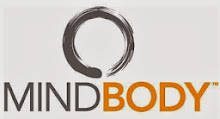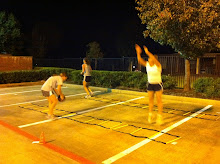
“I can’t lose weight because I eat too much.”
It seems that people blame their troubles with weight control or weight loss on the fact that they have a hard time controlling what they eat.
But, is this really the case?
Most often people fail to actually eat ENOUGH at all their meals; they skip breakfast, try to eat barely anything at lunch, and then are so hungry when they get home at night they either eat continuously, or snack without thinking while watching the late night news.
What this does is set their body up for a fat-storage situation that makes it even harder to want to eat in the morning because they’re so full from their late-night binging. However, there are some people that truly have a hard time eating less and always eat more than their body needs – especially if they rarely exercise or move their bodies at all. Or, there are those situations that we’re in where we can’t say “No,” regardless of what we do. Whether we chew gum, drink water, or try to just walk away, we always end up coming back and filling our bellies until they can’t hold anymore.
So, why is this? Why do some people not seem to have an "off" switch? What is it about them, or the situation that makes it so hard to eat less and stop before they’re stuffed? Some people don’t have an OFF switch. Let’s look at some of these factors so you can understand what may drive your desires for food. And maybe the next time you’re faced with more food than you need, you’ll be able to push away from the table and not think about it anymore.
1) The Bigger the Plate, the More You Eat
Just like houses, plate sizes have gotten bigger and bigger over the years. In fact, most portion sizes of foods are bigger than what we really need. No longer is a 9- or 10-inch dinner plate good enough (that size is for salads). Now, most dinner plates span 11 to 12 inches across, while cup and bowl sizes have also increased. These larger sizes encourage people to add more food, and subsequently, eat more than they really need, leaving themselves feeling over-full and guilty. Researchers from Cornell University showed that people consume 22% more food when it was served on a larger plate or bowl, than a smaller one, adding to an already increasing waistline.
A bigger plate will encourage you to eat more.
Even nutrition experts are unable to resist: When nutrition professors served themselves ice cream into a big bowl they gave themselves 31% more than those given a smaller bowl. Then, if they were given a large spoon, their scoop portion increased by 14%. So, regardless of education, even the wise can be fooled into eating more.
Bottom Line: Choose dinnerware that your grandparents would eat off of, especially if you can’t hold back during a good meal.
2) The Prettier the Plate, the More You Want to Eat
Scientists tested the attractiveness of a serving dish and how it influenced a person’s perception of the food they were eating. People were served a brownie on a napkin, a paper plate, or a nice china dish and then asked what they thought. After eating it off the napkin, they thought the brownie was alright. After the paper plate, it was pretty good. But after eating off the china, it was really, really good and the greatest brownie they’d ever eaten. They chose to pay more for the brownie when it was served on good china and wanted to eat more.
Got nice dishes? You’ll eat more food.
Take Home Message: If you want people to eat more, give them exceptional dinnerware to eat off of; but, if you’re trying to encourage yourself to eat less, choose plates that are slightly boring.
3) If You Can See It, You’ll Probably Eat It
Visual cues are one of the strongest predictors of overeating, or eating when not necessary.
That’s why television commercials at night often show images of tantalizing snack foods or creamy sugary treats. Not only are you tired and looking for a boost from a long day, but when your mind sees it, it thinks about how good it would taste. Eventually you’ll run to the pantry to seek out your own evening snack. The same thing goes for parties. When food is out in plain sight, people are more likely to eat it, whether they’re hungry or not. But, if that food was covered and invisible to the eye, it wouldn’t get wolfed down.
Weight Loss Tip: Keep your work sweet treats in an opaque container so thoughts of sugar won’t dance through your head. Or, better yet, don’t keep them there at all.
4) Close Food = Eaten Food
Picture this: You’re sitting in front of your computer working away, but you have a bag of pistachios also sitting beside you on your desk. You know you’re not really that hungry, but because those tasty green pieces of goodness are within arm’s reach, you’re more likely to eat them than if you have to go into the kitchen to seek them out. And so you do, and before you know it, the bag is almost empty and the pile of shells starts falling onto the floor. You feel stuffed and embarrassed, but you can’t go back in time to change it.
If food is within arm’s reach, you’re more likely to eat it.
If you have more time to think about what you’re about to eat, by forcing yourself to travel to get it, you’re more likely to rethink your unnecessary cravings.
Bottom Line: If ice cream is your passion, don’t even keep it in the fridge where you’re likely to grab it right after eating dinner. You’ll think twice if you have to drive somewhere to chow it down and will probably just say no.
5) Avoid Dining with a Big Eater
You’re going out to dinner with your pro-swimmer friend Mike (it could happen!), but you know good and well that he eats a lot more than you because his metabolism is cranking on overtime from all his exercise training. So, you try to eat less than him, but for some reason you still end up chowing down more than you need. Why is this? Scientists from Cornell also discovered that people mimic how their dining partners eat. When you’re seated in front of a person eating a large meal, you’re more likely to eat a larger meal than normal and over-doing your intake. Or, if that person with you eats fast, you may also find yourself eating faster than you’d usually eat and, in turn, taking in more calories.
Weight Loss Tip: If you’re going out with a big or fast eater, ensure your portion size is fixed to be smaller on purpose. And, make sure you don’t share dessert with him/her, no matter how good it looks.
























